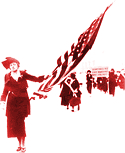war
Real Money for an Imaginary War
Since September 11, 2011, the Department of Homeland Security has doled out between $30 and $40 billion to state and local law enforcement and other first responders for weapons, surveillance networks, tanks, drones, and submarines to police U.S. citizens in the U.S.
The Washington Post has state-by-state database of projects, but this piece by Stephan Salisbury on the sweeping militarization of local law enforcement puts it into perspective:
“So much money has gone into armoring and arming local law-enforcement since 9/11 that the federal government could have rebuilt post-Katrina New Orleans five times over and had enough money left in the kitty to provide job training and housing for every one of the record 41,000-plus homeless people in New York City. It could have added in the growing population of 15,000 homeless in Philadelphia, my hometown, and still have had money to spare. Add disintegrating Detroit, Newark, and Camden to the list. Throw in some crumbling bridges and roads, too.”
It’s not just policing, policy, and policy making that have changed. And its not just another transfer of wealth from tax payers to defense contractors and their shareholders. Driven by fear, cash, and “national security,” America is being physically redesigned.
The Latina art collective fulana produced the image above to satirize an ad campaign on the NYC subway.
Stuxnet: Anatomy of a Computer Virus
Stylish and powerful infographic on the nature and ramifications of the computer virus Stuxnet.
While not the first time that crackers have targeted industrial systems, Stuxnet is the first discovered malware that spies on and subverts specific industrial systems and is widely suspected of targeting the uranium enrichment infrastructure in Iran.
Patrick Clair designed and directed the animation for the Australian television program Hungry Beast.
This may be old news (Stuxnet was discovered a year ago,) but the consequences are still playing out.
 “The Combat Paper Project utilizes art making workshops to assist veterans in reconciling and sharing their personal experiences as well as broadening the traditional narrative surrounding service and the military culture. Through papermaking workshops veterans use their uniforms worn in combat to create cathartic works of art. The uniforms are cut up, beaten into a pulp and formed into sheets of paper. Veterans use the transformative process of papermaking to reclaim their uniform as art and begin to embrace their experiences in the military.”
“The Combat Paper Project utilizes art making workshops to assist veterans in reconciling and sharing their personal experiences as well as broadening the traditional narrative surrounding service and the military culture. Through papermaking workshops veterans use their uniforms worn in combat to create cathartic works of art. The uniforms are cut up, beaten into a pulp and formed into sheets of paper. Veterans use the transformative process of papermaking to reclaim their uniform as art and begin to embrace their experiences in the military.”Mothers' Day for Peace

Arise, then, women of this day!
Though appropriated by the billion dollar intimacy-industrial complex, Mother's Day in the US started as an anti-war protest.
In 1870, Julia Ward Howe published the Mother's Day Proclamation, a manifesto against the the carnage of the American Civil War and the Franco-Prussian War. The Proclamation was tied to Howe's feminist belief that women had a responsibility to shape their societies at the political level and called for international congress of mothers. By 1873, women in 18 cities in America held a Mother's Day for Peace gathering. For 30 years, Mothers’ Day for Peace was celebrated in June until Congress officially declared Mother’s Day in May. Read a brief history of the holiday here.
Previously: Another Mother for Peace
Update: 5/9/2011. I posted this item with both historical interest but also some sadness and cynicism. How could what started as a day calling for public day of action and international solidarity become warped into a private celebration, closed to the world at large? Of course we love our mothers, but I can’t help feel that love has been turned against us, used to move merchandise and squelch political action.
Well it turns out I was somewhat wrong. Not one, but two columns ran in the New York Times calling for humanitarian aid to improve maternal health in the name of Mother’s Day, and I received email from a non-profit or two working to use the day for good. It’s not quite international solidarity to stand up to the powers that be, but it’s a start.



